Cenni di Pepo (Giovanni) Cimabue (1240 – 1302)
Get a Cimabue Certificate of Authenticity for your painting (COA) for your Cimabue drawing.
For all your Cimabue artworks you need a Certificate of Authenticity (COA) in order to sell, to insure or to donate for a tax deduction.
Getting a Cimabue Certificate of Authenticity (COA) is easy. Just send us photos and dimensions and tell us what you know about the origin or history of your Cimabue painting or drawing.
If you want to sell your Cimabue painting or drawing use our selling services. We offer Cimabue selling help, selling advice, private treaty sales and full brokerage.
We have been authenticating Cimabue and issuing certificates of authenticity since 2002. We are recognized Cimabue experts and Cimabue certified appraisers. We issue COAs and appraisals for all Cimabue artworks.
Our Cimabue paintings and drawings authentications are accepted and respected worldwide.
Each COA is backed by in-depth research and analysis authentication reports.
The Cimabue certificates of authenticity we issue are based on solid, reliable and fully referenced art investigations, authentication research, analytical work and forensic studies.
We are available to examine your Cimabue painting or drawing anywhere in the world.
You will generally receive your certificates of authenticity and authentication report within two weeks. Some complicated cases with difficult to research Cimabue paintings or drawings take longer.
Our clients include Cimabue collectors, investors, tax authorities, insurance adjusters, appraisers, valuers, auctioneers, Federal agencies and many law firms.
We perform Cimabue art authentication, appraisal, certificates of authenticity (COA), analysis, research, scientific tests, full art authentications. We will help you sell your Cimabue or we will sell it for you.
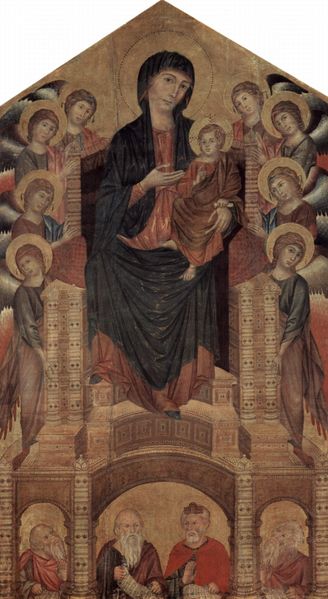
Cimabue, also known as Bencivieni Di Pepo or in modern Italian, Benvenuto Di Giuseppe, was an Italian painter and creator of mosaics from Florence. He is also popularly known as the artist who discovered Giotto. Cimabue is generally regarded as the last great painter working in the Byzantine tradition. The art of this period comprised scenes and forms that appeared relatively flat and highly stylized. Cimabue was a pioneer in the move towards naturalism, as his figures were depicted with rather more life-like proportions and shading.
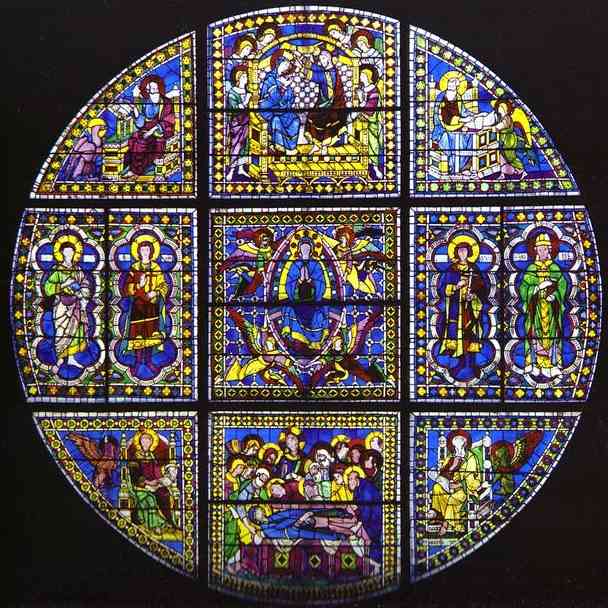
Stained Glass Window at Siena Cathedral
Owing to little surviving documentation, not much is known about Cimabue’s life. He was born in Florence. His career was described in Giorgio Vasari’s The Lives of the Most Excellent Painters, Sculptors, and Architects (called, in Italian, Le Vite), widely regarded as the first art history book, though it was completed over 200 years after Cimabue’s death. Although it is one of the few early records we have of him, its accuracy is uncertain. Vasari wrote that in the artist’s youth:
“Instead of studying his letters, Cimabue spent all his time covering his paper and his books with pictures showing people, horses, houses, and various other things he dreamt up.”
Such remarks concerning precocious devotion to art are, however, common in artists’ biographies of the 16th and 17th centuries. He was mentioned in Dante’s Purgatorio. Cimabue died in Pisa.

St. Francis
Judging this by the commissions that he received, Cimabue appears to have been a highly-regarded artist in his day. While he was at work in Florence, Duccio was the major artist, and perhaps his rival, in nearby Siena. Cimabue was commissioned to paint two very large frescoes for the Basilica of St. Francis of Assisi. They are on the walls of the transepts: a Crucifixion and a Deposition. Unfortunately these works are now dim shadows of their original appearance. During occupancy of the building by invading French troops, straw caught fire, severely damaging the frescoes. The white paint was partially composed of silver, which oxidized and turned black, leaving the faces and much of the drapery of the figures in negative.
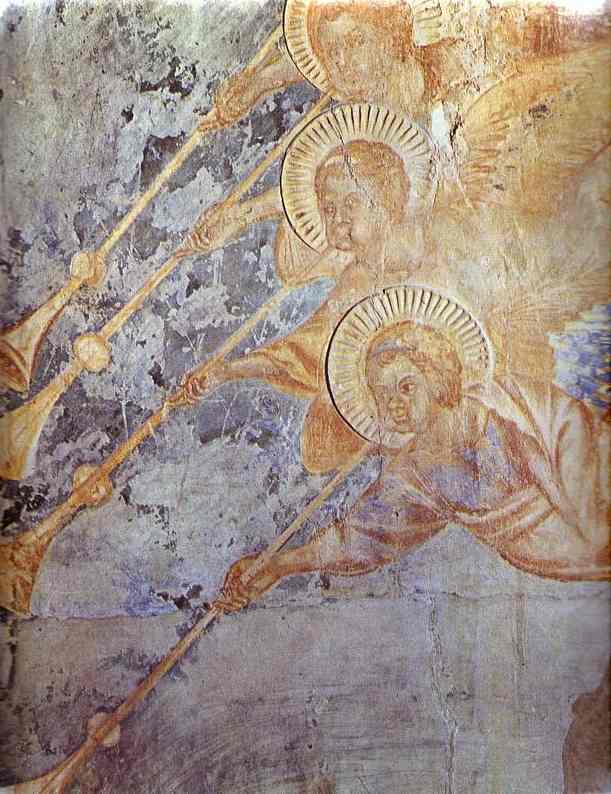
The Last Judgment Fresco
Another sadly-damaged work is the great Crucifix of Santa Croce at Florence. It was the major work of art lost in the flood in Florence in 1966. Much of the paint from the body and face washed away.

Crucifix 1287-1288
Among Cimabue’s few surviving works are the Madonna of Santa Trinita, once in the church of Santa Trinita, and now housed, with Duccio’s Rucellai Madonna and Giotto’s Ognissanti Madonna, in the Uffizi Gallery.
In the Lower Church of Saint Francis in Assisi is an extremely important fresco, depicting The Madonna and Christ Child enthroned with angels and Saint Francis. It is claimed to be a work of Cimabue’s old age.
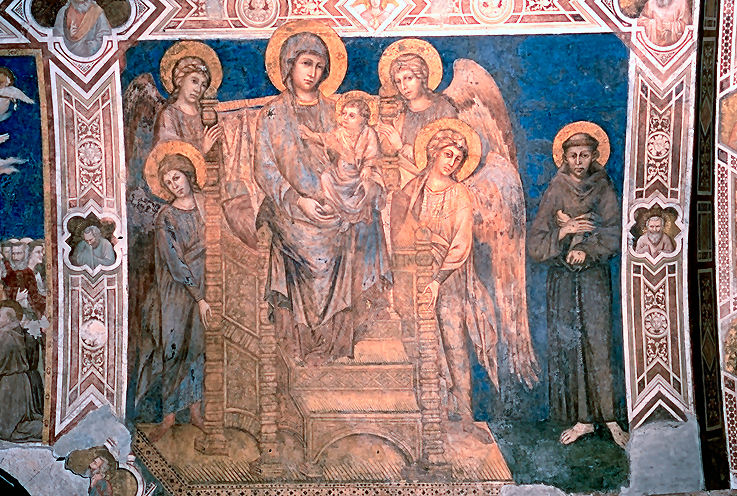
The Madonna of St. Francis
Two additional, very fine paintings attributed to Cimabue are now to be seen in New York at the Frick Collection. The Flagellation of Jesus was purchased by the Frick in 1950 and long considered to be of uncertain authorship, possibly Duccio’s. But in 2000, the National Gallery in London acquired a Virgin and Child with many similarities (size, materials, red borders, incised margins, etc.) The two pictures are now thought to be parts of a single work, a diptych or triptych altarpiece, and their attribution to Cimabue is fairly secure.
A tiny devotional painting of a “Madonna and Child with SS. Peter and John the Baptist” at the National Gallery of Art in Washington, DC was painted by Cimabue or one of his students around 1290. It is significant because it shows a cloth of honor that may well be the first patchwork quilt in Western art.
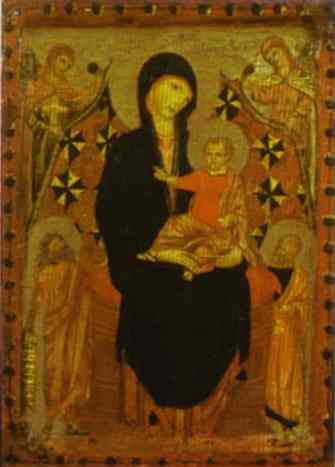
Madonna and Child with John the Baptist and St. Peter
While the Flagellation is owned by the Frick (and is one of only two Cimabues in the United States), the Virgin and Child is in the U.S. temporarily. For a short time, the two works can be viewed side-by-side. The pair are believed to date from 1280.
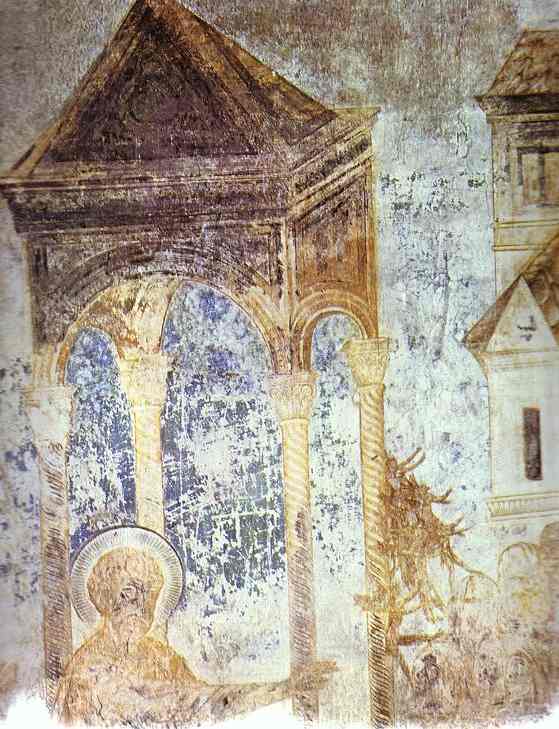
Still wondering about a 13th century Italian painting in your family collection? Contact us…it could be by Cimabue.
